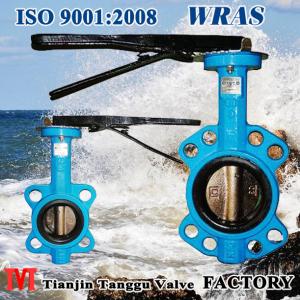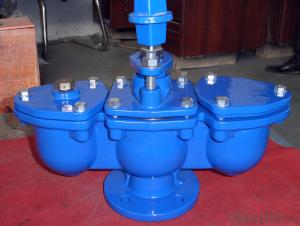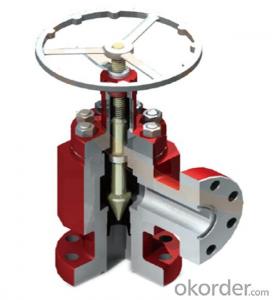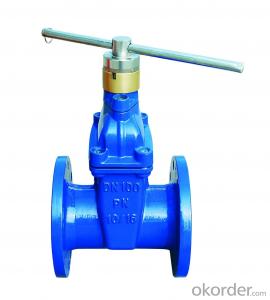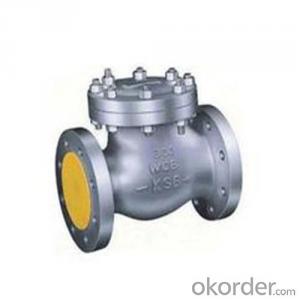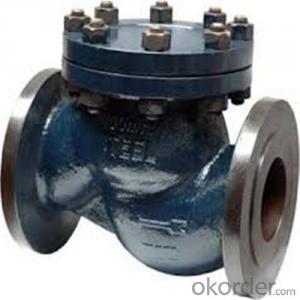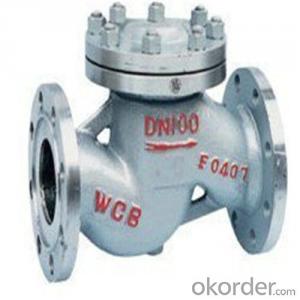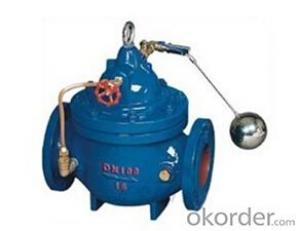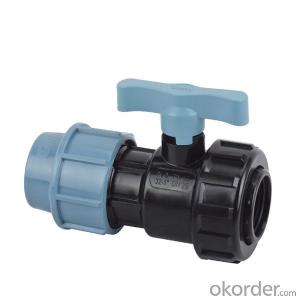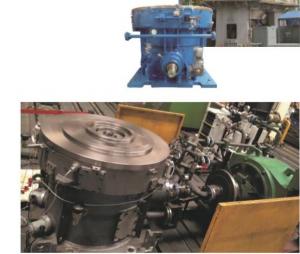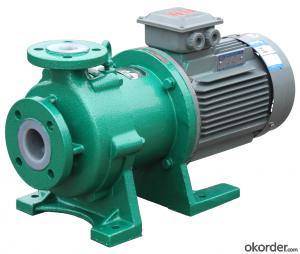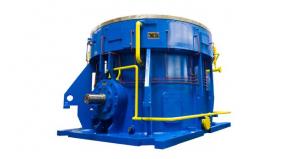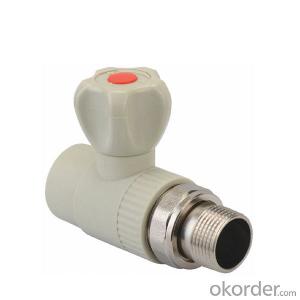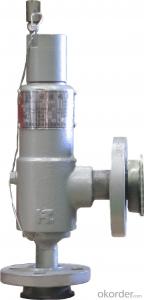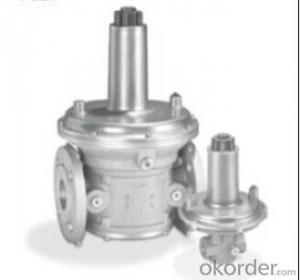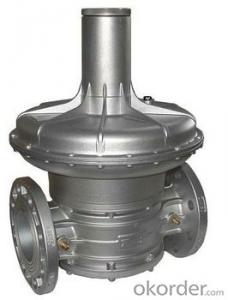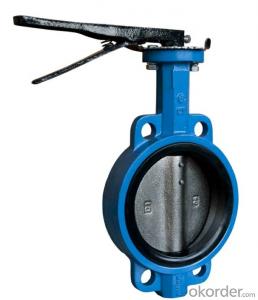Manual Operated Wafer Type Butterfly Valve
OKorder Service Pledge
OKorder Financial Service
You Might Also Like
Specifications
1.DN50-DN12002.PN1.0/1.6MPa(150/200PSI)
3.API,ASTM,ASME,BS,EN,JIS,ISO approved
4.manual,electric,pneumatic operated.
Wafer Type Butterfly Valve with Lever actuator
Features:
1. Small in size, light in weight, easy installation and maintenance.
2. Simple and compact construction, quick 90 degree on-off operation.
3. Minimized operating torque, energy saving.
4. Flow curve tending to straight line, excellent regulation performance.
5. Long service life, standing the test of tens thousands opening/closing operations.
6. BUbbles-tight sealing with no leakage ubder the pressure test.
7. Wide selection of materials, applicable to various medium.
Performance:
| Nominal pressue (MPa) | 1.0 | 1.6 | ||||||||
| Nominal diameter(mm) | 50-1000 | 50-1000 | ||||||||
| Test pressure | Shell | 1.5 | 2.4 | |||||||
| (MPa) | Seal | 1.1 | 1.76 | |||||||
| Applicable temperature | 150 | |||||||||
| Applicable medium | Fresh water, Sewage, Sea water, Air, Vapor, Food, Medicine, Oils, Acids, Alkalis, etc. | |||||||||
| Operating mode | manual, worm gear, pneumatic, electric, etc. | |||||||||
Standard:
| Design & Manufacture | Flange Connection | Face to Face Dimension | Test & Inspection | |||||||
| MSS SP-67 API609 EN593 | DIN PN10/16/25; ANSI B 16.1 BS4504; ISO PN10/16 JIS B 2212/2213 BS 10 table D; BS 10 table E | API609 ISO5752 series 20 BS5155 | API 598 | |||||||
Material List:
| No. | Part Name | Material | ||||||||
| 1 | Body | Carbon Steel/Stainless Steel/Cast Iron(GGG25)/Ductile Iron/ Al-Bronze | ||||||||
| 2 | Disc | Al-Bronze/CF8M/Ductile iron/WCB | ||||||||
| 3 | Seat | EPDM/PEFE/Buna/NBR/Hypalon | ||||||||
| 4 | Stem | Carbon Steel/Stainless Steel314/Stainless Steel316 | ||||||||
| 5 | Bushing | PTFE/Lubricating | ||||||||
| 6 | O ring | EPDM/PEFE/Buna/NBR/Hypalon | ||||||||
| 7 | Pin | SS316/SS416/SS304 | ||||||||
- Q:Can someone please help me on this anatomy question:Describe the physical similarities and differences in the structure of the AV valves and the semilunar valves.Thanks
- av valves are anchored to the wall of the ventricle by chordae tendinae, multicusped valves while semilunar valves do not have chordae tendinae, but are more similar to valves in veins. positioned on the pulmonary artery and the aorta both have the same function of prevent backflow of blood
- Q:I have a 2004 rmz 250 i was wondering if i could get some specific details on how to adjust and the spec's for the intake valves... thanks
- Buy a manual for your bike. The question is far too broad to be answered here due to the complex nature of a modern valve train, like found on your RMZ. It involves removing the intake and exhaust camshafts to gain access to the shims underneath the buckets on top of the valves. You must know where to time the cams again in relation to the crank otherwise, it is very possible to destroy your engine if not installed properly...Hence the advice on obtaining a quality service manual beforehand... It's also why the shops charge a seemingly extortionate amount.
- Q:I've been told that I need to replace a clogged expanssion valve on my '96 toyota camry.A friend said he would properly recharge the system if i replaced the parts needed .I can't ask him where it is because he's out of town for a little while. I also need to replace the drier ,but it's obvious where it is.Please help me.
- the expansion valve is usually located inside the line next to the accumulator/dryer. If you drain the system, and remove the accumulator, look inside the line that leads into it, and it should be stuffed in the line. If you see one inside the line, it is actually called an orifice tube, but has the same function as an expansion valve. Actually, expansion valves are usually used in large vans with a rear a/c evaporator unit. If it is an external valve it should be next to the accumulator as well. The purpose of this valve/tube is to create high pressure gas out of low pressure liquid freon. These usually become clogged with debris after the compressor's pistons break apart and contaminate the system. If you find little metal shavings in the tube, or valve, your compressor was either replaced at one time, or is bad now.
- Q:does my 96 accord have an oriface valve or the other kind of valve? if so where is it? because im pretty sure that is the problem with my a/c not being cold at all
- It uses an expansion valve inside the evaporator assembly, part 11 in the first source. If the evaporator valve is not working the compressor will be damaged - by no oil if the valve stays closed or by slugs of liquid spilling out of the evaporator if it sticks open. Fortunately, orifices and expansion valves are very reliable. I bet a standard A/C service (about $100) will get you cool again. If you do anything to disturb the refrigerant loop (trying to charge it at home, trying to change refrigerant system parts) you will only spend more... probably a lot more.
- Q:I have a mountain bike that my brothers left me. the tire in the front is a normal s valve, the one in the back is a presta valve. now this was ok because it was fully pumped up, but then it popped on the road, so i got a new tire ad put it on and was all ready to pump it up but when i tried to pump it no air would go in. so i looked at it a while and i figured out the top unscrews, so i unscrewed it and put the pump back on and started pumping, but after a while i figured out that no air was going in the tire and now i'm very confused.
- Be careful pumping prestas. If you're not using a pump with a hose, much back and forth movement of the valve stem will cause it to split. In fact, that may have already happened and that's why no air is going in the tube.
- Q:Can someone explain to me what lead and lag time are? Also, what are the three flow characteristics? Linear, equal percentage but what is the third. If I wanted to have a minimum stop at 25% on a non-linear valve such as a butterfly valve, how would I achieve this. Obviously you cannot just restrict the valve by 25% of its travel as it is not linear
- Hope this helps in some way... To start the 3 main flow characteristics of a control valve are Liner, Equal percentage and Quick opening (or fast opening). If you interested there are also other characteristics. As far as i am aware the lead time is the time in which a signal is sent to the valve and the lag time is the time in which the actuator moves and closes the valve. The pysical movement. As for your final question the only thing i can think of is to alter the actual size of the butterfly valve or put a reducer before it. Sorry if my information was of little use.
- Q:I assembled my new gas grill, but I'm not sure if the burner pipes (aka venturi) are properly connected to the valves. My assembly matches the picture in the instruction manual, but I'm not sure if the seal is tight enough. How do I know? Do I attach the propane and test? I'm concerned about the safety of doing so. Thanks!
- Pipe Burner Venturi
- Q:what is a foot valve? how does it look? what is the application in petrochemical companies?
- A foot valve is simply a check valve. It is common use in a piping system at the pump suction side. By placing it this way when the pump stops operating, fluid won't flow back into the lower reservoir and the suction side of the pump is always full of liquid.
- Q:I think on old AC units They had a different valve than the shrader. It might be called a king? Anyway, I can't get my gauge to read the pressure. The needles don't move at all. How can I measure, refill this type of HVAC?
- no offense,but i'm a little concerned that you have gauges and the knowhow to check freon,but dont know about different types of service / access valves.apply any advice at your own risk......anyway,,if you remove the large cap that covers the stem of the service valve you need to [ with gauges already connected] turn the stem clockwise to open it so your gauge can read the pressure,[ they make a special service valve wrench for this purpose,an adjustable wrench usually will work,but be careful not to strip the square end of the stem if its old and doesnt want to turn],,only turn the stem one or two times around,,DO NOT keep turning it clockwise until it stops or you will close the valve off....when finished checking with gauges,be sure to turn stem counterclockwise until it stops turning,,then you can safely remove gauges..if you remove gauges without turning stem counterclockwise,the the freon will blow out of the valve when gauges are removed,,not a pleasant experience,, be sure to where gloves and goggles,esp if you arent used to doing this......dan
- Q:I dont want to buy an expensive snorkel, because I only want the valve. Its for a project for a club where I go to college.
- Not okorder /
1. Manufacturer Overview |
|
|---|---|
| Location | |
| Year Established | |
| Annual Output Value | |
| Main Markets | |
| Company Certifications | |
2. Manufacturer Certificates |
|
|---|---|
| a) Certification Name | |
| Range | |
| Reference | |
| Validity Period | |
3. Manufacturer Capability |
|
|---|---|
| a)Trade Capacity | |
| Nearest Port | |
| Export Percentage | |
| No.of Employees in Trade Department | |
| Language Spoken: | |
| b)Factory Information | |
| Factory Size: | |
| No. of Production Lines | |
| Contract Manufacturing | |
| Product Price Range | |
Send your message to us
Manual Operated Wafer Type Butterfly Valve
OKorder Service Pledge
OKorder Financial Service
Similar products
New products
Hot products
Hot Searches
Related keywords
